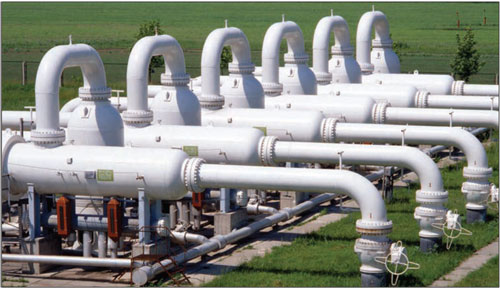By Brice Wallace
Think “salt” and it’s not likely that “energy” will come to mind.
But a pair of companies are planning to use underground salt caverns in Millard County to build what they’re calling the largest renewable energy storage project in the world.
The caverns — traditionally used to store liquid fuels — will store hydrogen and compressed air that can be used to produce clean power for the western U.S. energy grid. If the first-of-its-kind project is successful, it could solve an age-old bugaboo in the industry — large-scale storage of energy — and close the gap between times when power is generated and power is used.{mprestriction ids="1,3"}
In announcing the project at the recent Governor’s Energy Summit in Salt Lake City, Gov. Gary Herbert described the project as “a breakthrough for energy development in rural Utah.”
“The Utah Advanced Clean Energy Storage project, as it will be known, will develop 1,000 megawatts of 100 percent clean power and energy storage-deploying technologies and strategies that will eliminate harmful emissions and enhance the power grid here in the western United States,” Herbert said.
The $1 billion Advanced Clean Energy Storage (ACES) project is being undertaken by Mitsubishi Hitachi Power Systems (MHPS) and Holladay-based Magnum Development. Magnum owns and controls salt dome formations and already uses five caverns to store liquid fuels. Caverns near the Intermountain Power Project in Millard County will be used in the ACES project to store renewable hydrogen and compressed air, and the project will use large-scale flow batteries and solid oxide fuel cells.
The ACES project goal is to initially store enough to meet the energy needs of 150,000 households — the equivalent of one-fifth of Utah households, Herbert noted — for an entire year.
The overarching goal is to be able to call upon ACES for renewable energy at times other than when the sun is out or when winds are relatively calm.
“What we’re doing is we’re actually taking clean energy that is in excess and actually storing that,” Michael McManus, senior director of the new power and energy solutions business at Mitsubishi Hitachi Power Systems, said at the summit. “There are some other technologies that are using maybe off-peak energy to store energy for future time, but this is actually taking dedicated clean energy — whether it comes from solar, wind or in the future some other sources — and stores that in a few forms.”
For example, the stored hydrogen can be burned, carbon-free, in gas turbines to produce electricity as needed to meet demand.
“We have different ways … that will allow you to store excess renewables and smooth that out,” he said. “In this case, we’re talking about measurement in days, weeks and months of storage instead of hours. … That project really is another example of providing a ramp or a pathway for more renewables to be put on the grid, having an ability to store some of that energy and deploy it when it’s needed, so we can have that shaping function between supply and demand.”
Power magazine said the companies plan to build an initial 250-megawatts phase of underground storage by 2025. The companies have said the ACES project will engineer, finance, construct, own and operate its facilities, and they expect to add strategic and financial partners to participate in the project in the near future. Power said MHPS still needs to find partners to build the power plant, as well as suppliers for the fuel cell and flow battery technology.
“This investment shows that Utah is not only blessed with unique energy resources but also benefits from wise policy and an ability to forge unprecedented partnerships that help drive innovation,” Herbert said at the summit.
In a news release announcing ACES, Craig Broussard, CEO of Magnum, described the two companies as “great partners.”
“Magnum has the below-ground technologies necessary to store energy at utility scale, while MHPS has the above-ground technologies such as hydrogen-fired gas turbines, compressed air storage, solid oxide fuel cells and battery storage technology, to supply electricity at grid scale,” Broussard said. “With the ACES initiative, we will dramatically accelerate the vision of a western renewable energy hub that we launched over a decade ago.”
Paul Browning, president and CEO of MHPS Americas, said “the next step in decarbonization” is needed as California and other western U.S. states retire their coal-fired power generation plants.
“Mixing natural gas and storage, and eventually using 100 percent renewable storage, is that next step,” Browning said. “The technologies we are deploying will store electricity on time scales from seconds to seasons of the year. For example, when we add gas turbines powered with renewable hydrogen to a hydrogen storage salt dome, we have a solution that stores and generates electricity with zero carbon emissions.”
Central Utah “is the ideal location” for the project “and Utah is a business-friendly state for projects like this,” Broussard said. ACES will be near Intermountain Power Project, which generates more than 13 million megawatts each year from two coal-fired units and delivers the electricity over AC and DC transmission systems to 35 project participants, primarily in Southern California and Utah.
“Magnum’s site adjacent to the Intermountain Power Project,” he said, “is positioned to take full advantage of existing regional electricity grid connections, fully developed transportation infrastructure, ample solar and wind development capacity, a skilled workforce currently transitioning away from coal, and, of course, the unique salt dome opportunity.”{/mprestriction}








